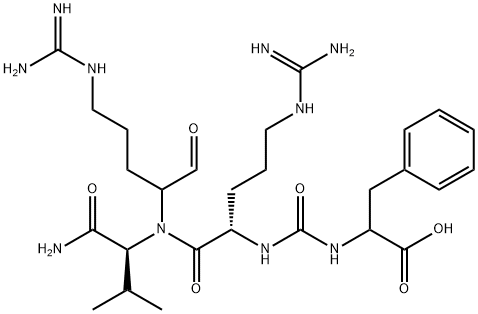SAFETY INFORMATION
| Signal word | Warning |
|---|---|
| Pictogram(s) |
 Exclamation Mark Irritant GHS07 |
| GHS Hazard Statements |
H302:Acute toxicity,oral |
COMPUTED DESCRIPTORS
| Molecular Weight | 604.7 g/mol |
|---|---|
| XLogP3 | -2.7 |
| Hydrogen Bond Donor Count | 9 |
| Hydrogen Bond Acceptor Count | 8 |
| Rotatable Bond Count | 19 |
| Exact Mass | 604.34452916 g/mol |
| Monoisotopic Mass | 604.34452916 g/mol |
| Topological Polar Surface Area | 283 Ų |
| Heavy Atom Count | 43 |
| Formal Charge | 0 |
| Complexity | 975 |
| Isotope Atom Count | 0 |
| Defined Atom Stereocenter Count | 4 |
| Undefined Atom Stereocenter Count | 0 |
| Defined Bond Stereocenter Count | 0 |
| Undefined Bond Stereocenter Count | 0 |
| Covalently-Bonded Unit Count | 1 |
| Compound Is Canonicalized | Yes |
PRODUCT INTRODUCTION
description
Antipain is a serine/cysteine protease inhibitor originally isolated from various strains of actinomycetes. Early studies investigated the potential for antipain to alter DNA damage and chromosomal aberrations in irradiated cells or those treated with chemical mutagens such as N-methyl-N'-nitro-N-nitrosoguanidine (MNNG). Antipain was used in 2010 to obtain a crystal structure of the Leishmania major oligopeptidase B (OPB), a serine protease that serves as a virulence factor in trypanosomatids. The binding of antipain to OPB has been used in molecular dynamic studies to identify other OPB inhibitors with more favourable pharmacodynamic and pharmacokinetic properties for potential development as anti-trypanosomatid drugs.
